
A handy use for digital editing is the virtual pushing-in of crowns. Often, when photographing watches, it is desirable to stop the movement. With long shutter speeds the moving seconds hand will not be recorded as a solid shape. Also, it is good to be able to position the hands precisely where you want, so that they don't cover up any important detail and simply look 'good'. Many otherwise fine watch pictures lose some impact due to careless hand positioning.
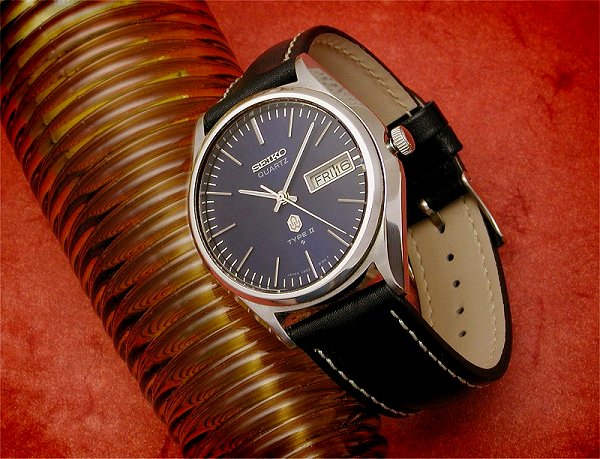
At left is the image with the crown pulled out to hack (stop) the movement. This is a quartz watch, but hacking will also work on many mechanical movements. Other options are to let the movement wind down completely, or open the caseback and remove the battery or manually stop the balance wheel. These options are not always practical.
Below is the same image with the crown digitally pushed back into position. This is often desirable as it provides an image of the watch that is more representative of its normal appearance.
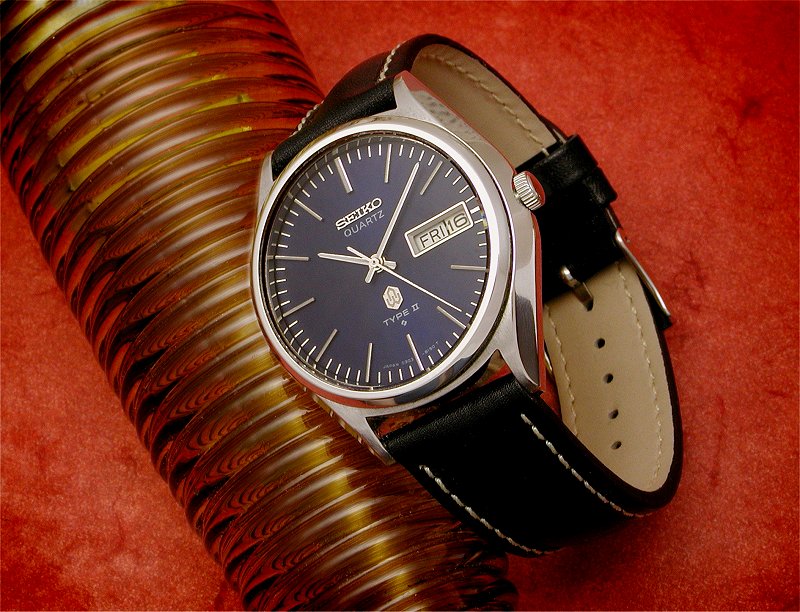
There are a number of methods that will achieve the same goal. I sometime use layers, slightly offsetting one layer so that the crown appears in the correct position. The rest of that layer is then erased to show the watch beneath. I also sometimes use a simpler method where the crown is carefully selected, (usually under a degree of magnification), cut out, and then moved and pasted in the correct position. This leaves an area where the crown was cut out that needs to be filled. I use the clone brush to do this. Depending upon the background this can be easy, or require a little effort. I decide which method best suits the particular image.
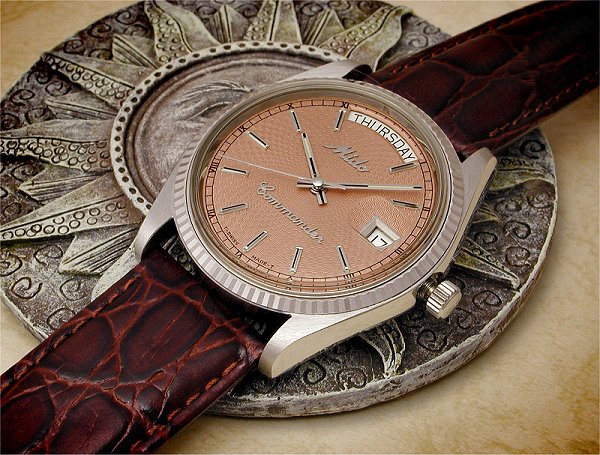
At left and below is another example of before & after, this time with a mechanical watch. This is a movement with a hack feature, which makes it quite easy to stop the seconds hand precisely where desired.
In this example I used the method of selecting the crown and moving it in to the correct place. This left a blank area in the pattern of the sundial background which required filling-in. I used the clone brush tool to select and copy suitable texture from the surrounding area. If the area is in shadow it is also important that the cloned area is consistent with the rest of the adjacent image. Below is the completed image with the crown pushed-in.
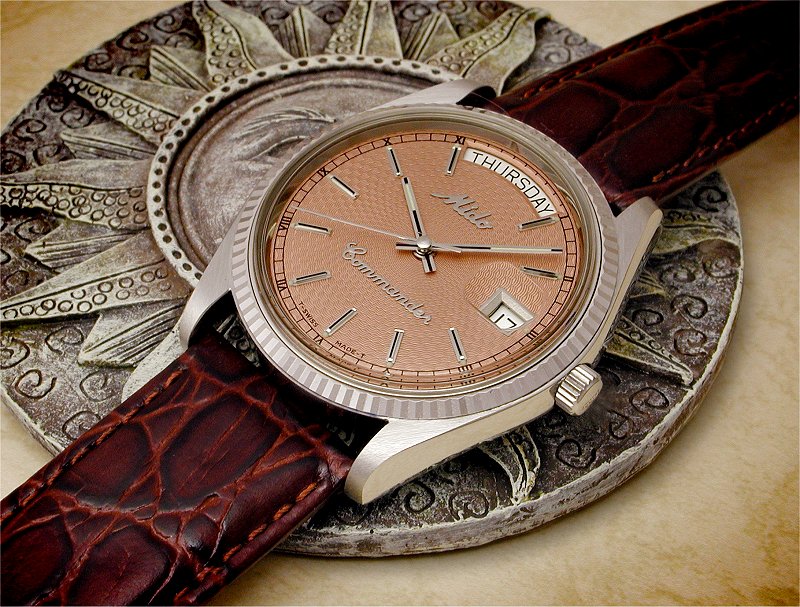
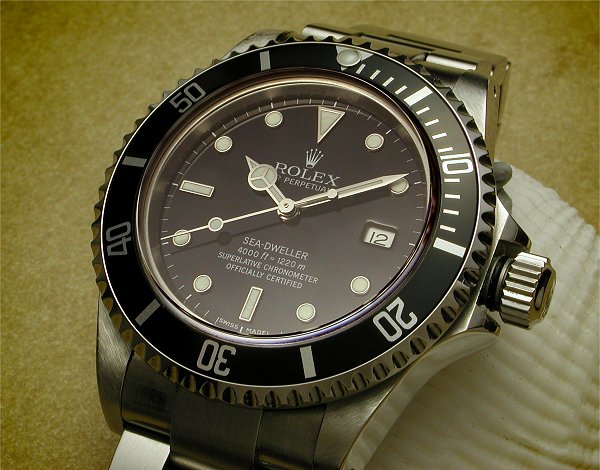
Divers watches, such as the Sea-Dweller at left, often have very noticeable screwdown threads visible when the crown is pulled out to hack the movement. With the crown pulled out the hands are stopped, but the outline of the watch is markedly altered from the way it appears when worn.
In this image the area from which the crown was moved required filling-in with appropriate sea shell texture. In such a case it's not necessary to be exact about the cloning as long as it is in keeping with the rest of the image. If the job has been done well the viewer should have no reason to inspect the crown area with any greater scrutiny than the rest of the watch. To that end, it pays to study the particular watch with the crown pushed or screwed-in. Check just how far in it sits, and how it relates to the rest of the watch. Look out, also, for small changes in angle between the crown being out and in. Depending on the viewpoint and focal length of lens used a crown may photograph at a slightly different angle to the watch when pulled-out, as opposed to how it should look when pushed in. Sometimes it may be necessary to rotate the angle of the crown image just slightly to make it look 'natural' when pushed back in.
Below we have the watch with the crown (virtually) screwed-down snugly, good for at least 4,000 feet.
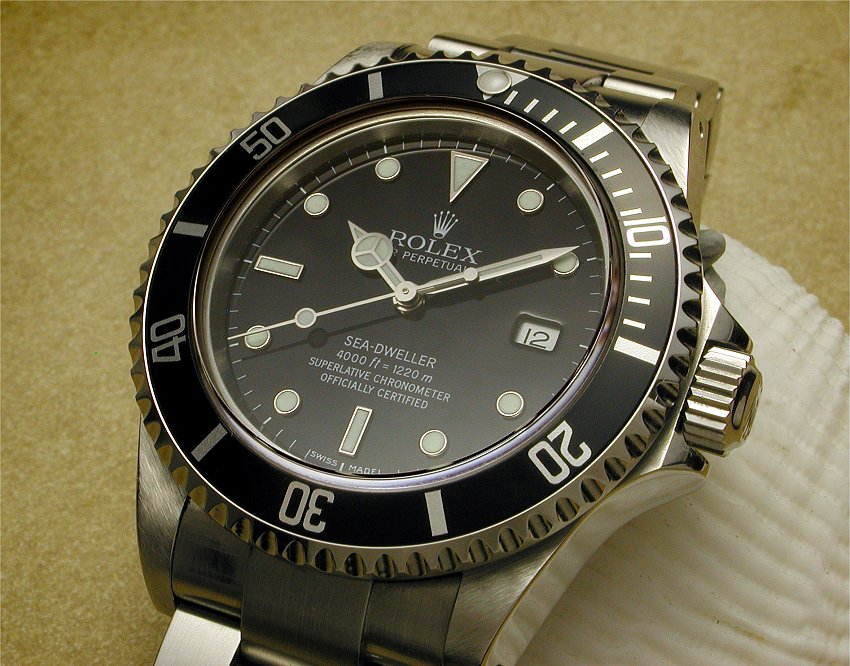
(Watch owned by Tom G).
Copyright 2005 Paul Delury